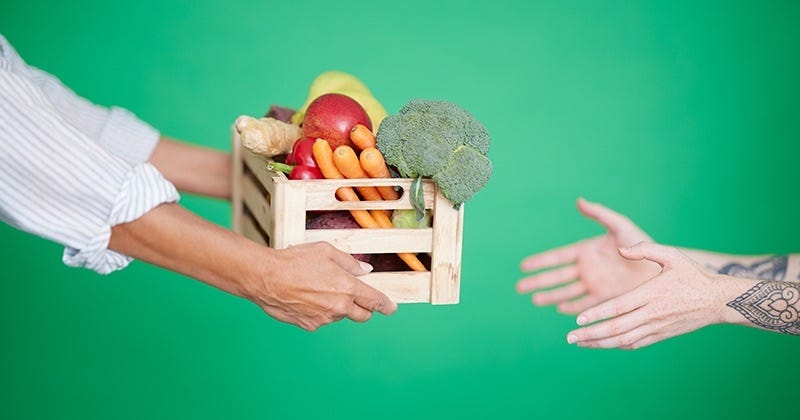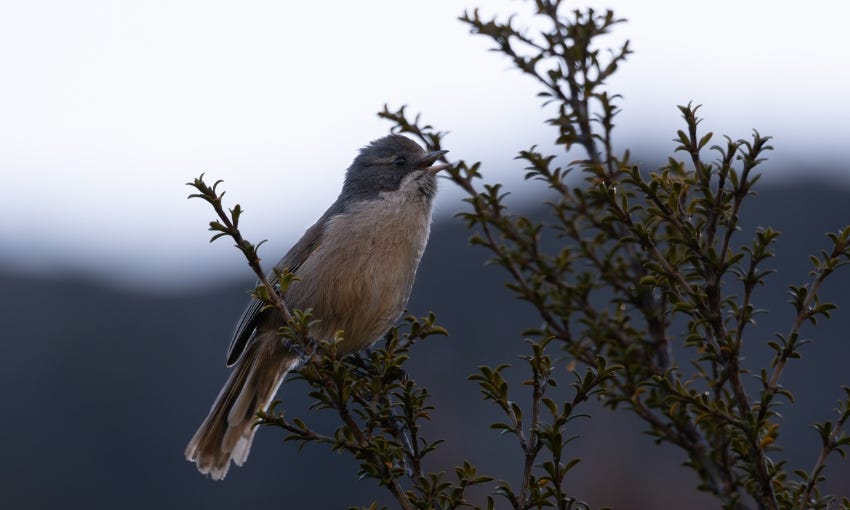Queenstown’s old luge conveyor gets new life powering recycling initiative
This Southland couple have ambitious plans to divert construction waste from landfill.
Kia ora, welcome to Future Proof brought to you by AMP. I’m Ellen, thanks for joining me this week.
As much as 50% of the waste generated in New Zealand comes from construction and demolition, and a decent chunk of it ends up chucked – in landfill or cleanfill. In some places, like Southland, disposal of construction and demolition waste is standard.
But husband-and-wife team Dan and Kereana Butterfield are aiming to change that with a new facility to give wood, metal, jib, plastic, cardboard, concrete and bricks a second life.
The pair started their waste management company, Kiwi Skips, six years ago after finding it frustratingly difficult to hire a skip for their home renovation. They quickly realised that in Southland, landfill is currently the only fate for the construction waste they collect. “Construction waste, organic waste – in Southland, there’s no other option for these types of waste. They just go straight to landfill, which is just wrong,” says Dan. This inspired them to embark on an ambitious project to develop Southland’s first resource recovery centre.
Usually, a project on that scale would require several million dollars of capital – money that Dan and Kereana don’t have. Instead, they’re turning to recycled parts from other industries to gradually build up their facilities. Their main sorting facility is the conveyor from the old Queenstown luge. Construction on the building to house the old luge conveyor has begun, thanks to a $20,000 grant from Xero’s inaugural Beautiful Business Fund. The project won the ‘Innovating for sustainability’ category. “It will be easier, more efficient and safer for the staff to separate the wood from the concrete from the brick from the metal. All that good stuff that can be repurposed, reused, crushed down,” says Kereana. The pair expect the sort facility to be constructed in about six months, and are documenting the behind-the-scenes on a weekly vlog called Trash Talk.
From there, wood can be shredded for use in landscaping, biofuels or animal bedding, and concrete can be crushed to create more sustainable aggregates. Glass can be ground into sand, for use in new concrete. Materials like cardboard and metal can be bundled up and shipped elsewhere for recycling.
“We are always gonna need landfill,” says Dan. “But we just need to be a bit more careful about how quickly we’re filling it.”
The fight against food waste that's helping those in need
New Zealand creates an astonishing amount of food waste – over 100 million kgs every year – and our levels of food insecurity are also high. KiwiHarvest is a charity that is using these two issues to solve each other, feeding those in need while keeping edible waste out of landfills.
Read more about their mahi, in partnership with AMP, on The Spinoff now.
The global climate summit Cop28 kicks off – what can we expect?
Tens of thousands of delegates, activists and lobbyists are descending on Dubai for the 28th Conference of the Parties – which is basically a big UN meeting where nations try to bash out international consensus on what to do about the climate crisis. NPR has a useful explainer breaking down what the talks are, what they’re supposed to achieve and why they feel like such a big circus. A big part of the problem is the dominance of fossil fuel lobbyists. This year’s host nation, the UAE, planned to use the summit as an opportunity to make oil deals, documents obtained by the BBC reveal.
The “centrepiece” of Cop28 will be the global stocktake, Carbon Brief explains. Countries have to thoroughly appraise their progress towards the goals of the Paris Agreement (which we know is woefully insufficient across the board). The stocktake is also a mechanism for ratcheting up climate ambition, as a “decision text” will outline what everyone has to do going forward. This could include phasing out fossil fuels, tripling renewable energy, or bumping up climate finance into the trillions.
Carbon Brief has also compiled an interactive table of who wants what. New Zealand is down for phasing out all fossil fuels as a priority. However, New Zealand diplomats may have to change tack this week, Stuff’s Olivia Wannan reports, as the new coalition government “want to promote, not limit, domestic oil and gas extraction”.
Predator Free New Zealand Trust celebrates 10 years
A couple of years before Predator Free 2050 became government policy, a group of ambitious New Zealanders got together behind a vision for Aotearoa that’s free of introduced predators like possums, mustelids and rats. This month, the Predator Free New Zealand Trust is celebrating its 10th birthday. “Your backyard matters,” Jessi Morgan told RNZ, noting that the movement has gone mainstream, and is something we can all get involved in. The Trust’s map of the country now features 1,979 community groups doing their bit, among a raft of other successes from the last decade.
Wellington makes it easier to get on yer bike
Wellington has completely reimagined how it builds cycleways, writes The Spinoff’s Wellington editor Joel MacManus. The huge upgrade to the city’s cycling network is ambitious, fast and surprisingly cheap: “it’s a case study in the speed at which New Zealand cities can change their transport priorities – if they have the political will and the right strategies in place,” McManus writes.
If you’re like me and have to contend with hills, an electric bike might be an attractive option. Globally, e-bikes are displacing four times as much demand for oil as all the world’s electric cars – particularly due to their “staggering uptake” in countries like China where mopeds have long been a common transport choice. The humble e-bike is cutting demand for oil by one million barrels per day – about 1% of total global demand.
Food is at the heart of climate change. The ways we grow, harvest, eat and discard food are ripe with climate solutions and offer delicious paths to a fairer, greener future. Kai nourishes us, fuels the New Zealand economy, and impacts te taiao. In 2024, The Spinoff wants to investigate how food shapes all sides of New Zealand in a new longform editorial project, What's eating Aotearoa. But we need your support to tell the stories we know our readers love – stories that inspire, investigate, entertain and inform.
Last week, we launched a campaign on PledgeMe to raise $75,000 to fund food-focused longform journalism, offering a range of fantastic rewards – including some from your favourite Spinoff writers. We're over halfway to our initial goal of $50,000. If you've already donated – thank you! If you're keen to support us, check out those tasty rewards and make a pledge today.
More stories
The new government has hit the brakes on climate and environmental action. Stuff’s Olivia Wannan rounds up the surprising, the noteworthy and the expected policies from the coalition agreements.
Climate activism around the world is becoming more disruptive – and in response, the backlash from authorities is harshening. Will New Zealand follow the same path?
In 2022, private jets belonging to just 200 celebrities produced carbon emissions equivalent to more than 56,000 passenger vehicles.
New Zealand’s huge ocean territory contains two billion tons of carbon, locked in the seafloor, a new report finds. If we want to fight climate change, it might be a good idea to keep it there, Bill Morris writes for New Zealand Geographic.
A growing number of companies are lining up to capitalise on soil carbon credits.
These charts show which countries are embracing renewables, and which are clinging to – or ramping up – fossil fuels for electricity generation.
More charts! These ones show how we might be able to limit warming to 1.5°C.
This week on When the Facts Change, Mike Casey from Rewiring Aotearoa joins Bernard Hickey to discuss what it took to make the switch from running his cherry farm on fossil fuels to renewable electricity.
Image: Ben Ackerley via iNaturalist NZ CC BY-NC 4.0.
To finish this issue, a lovely photo of a bird we don’t hear much about: the pīpipi brown creeper, a small noisy songbird that lives in the forests and shrublands of the South Island and Rakiura. This one was snapped in Arthur’s Pass National Park and is one of more than 6,000 observations submitted from Aotearoa as part of the Great Southern Bioblitz, a four-day event aiming to catalogue as much biodiversity in the Southern Hemisphere as possible. I also enjoyed these observations of a ngahere gecko sunning itself in Wellington, and this pied shag nabbing a pigfish snack at Rakiura. Efforts like the bioblitz can reveal new discoveries about the natural world around us, and are a great excuse to get outside and explore.
Peep you next week,
Ellen
Got some feedback about Future Proof or topics you’d like covered? Get in touch with me at futureproof@thespinoff.co.nz















Nice read, cheers
This is lovely to see but it pains me to see how hard it is to process organic waste in New Zealand.